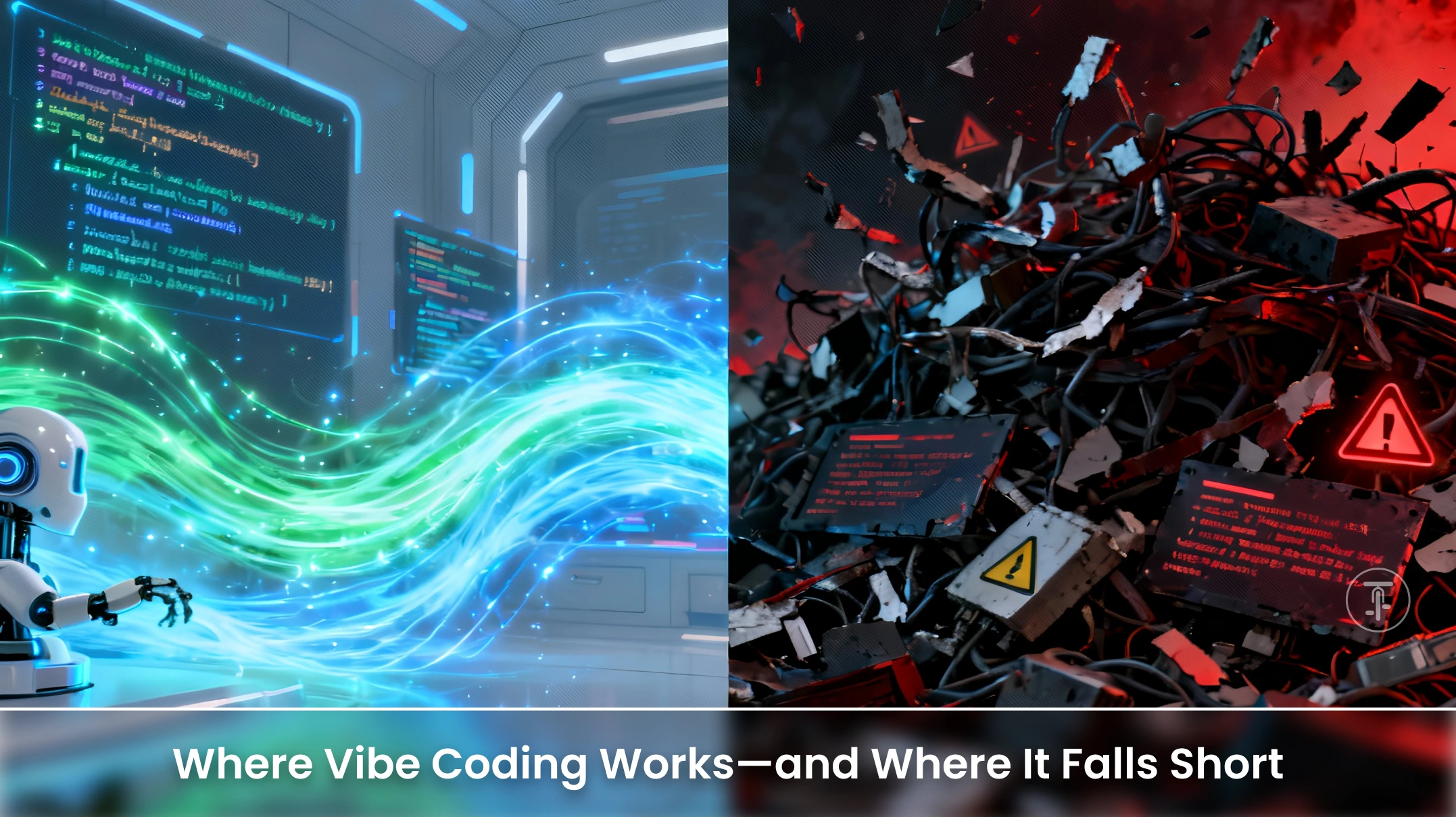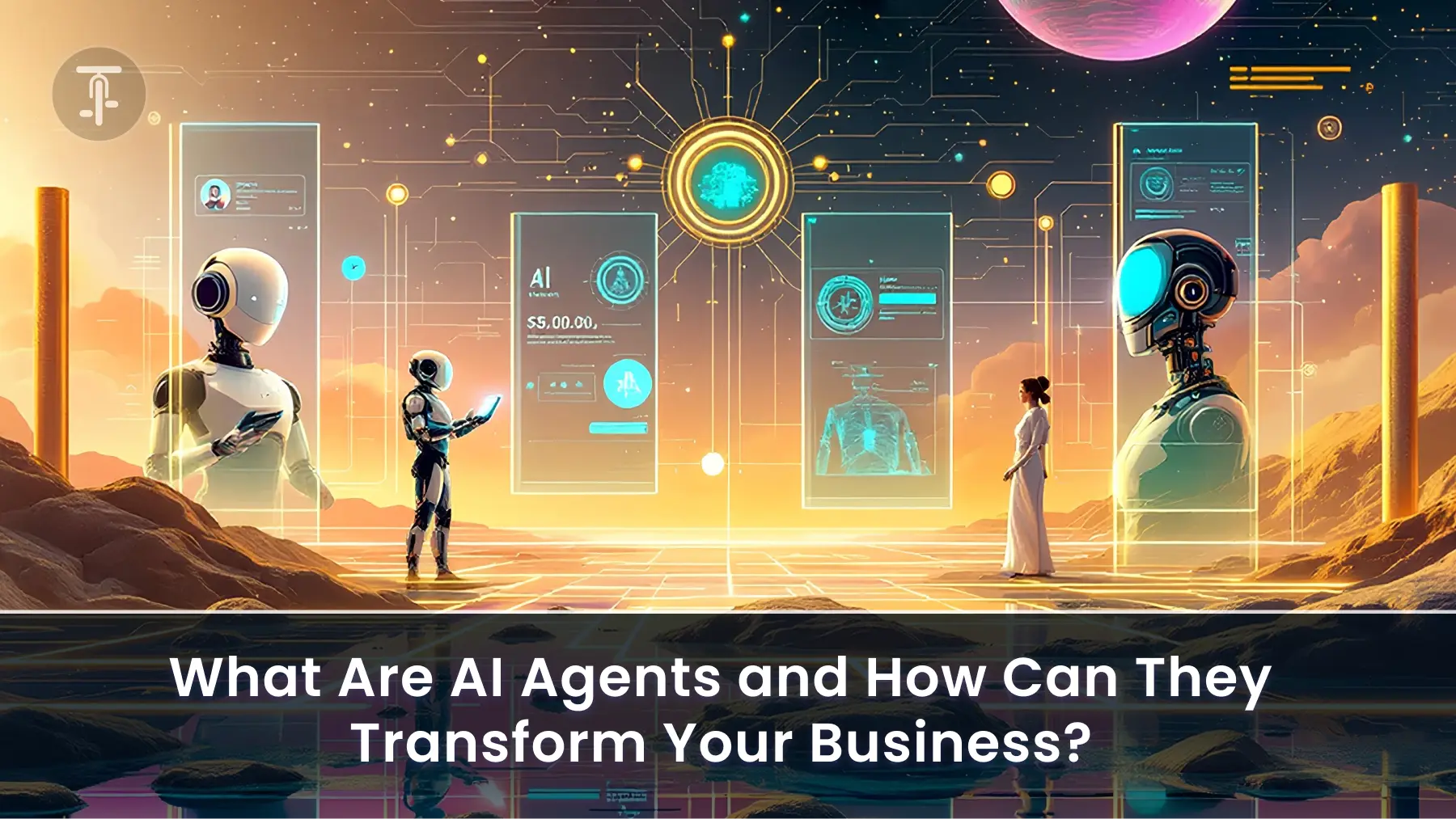Introduction
You can create a prototype in a day using Vibe coding. You can also lose millions of dollars because one line of code was never questioned. Vibe coding delivers speed and convenience. Hard engineering delivers predictability and accountability. They are not the same thing, and confusing them is a huge risk.
This blog discusses why treating vibe coding as a software development methodology is dangerous, what measurable costs look like, and how teams should balance AI tools with strict engineering practices to achieve speed without disaster.
What People Mean by Vibe Coding
Vibe coding is the usage of natural language inputs and AI agents to create, build, and improve code, where the human role is more about prompting and accepting than having awareness of and writing the implementation. Large vendors refer to this as AI-driven intent-to-code workflows.
That is a meaningful description. Using AI to supplement an experienced engineer who still maintains code review, tests, and architecture is a gain in productivity. Replacing human comprehension and strict verification with iteration prompts and “vibes” means you’ve altered the engineering trade-off and not in a positive direction.
The Hard Numbers: Technical Debt is a Debt Machine
Technical debt is real; it manifests itself in lost time, features that don’t get delivered, outages, and actual dollars. One recent estimate placed worldwide tech debt costs in the trillions and in need of huge investment to fix legacy issues.
Developer surveys reveal the human side. Technical debt is a persistent number one reason for developer frustration and lost productivity in the Stack Overflow Developer Survey. Teams devote an astonishing proportion of their cycles to fighting shortcuts rather than creating new value. For some companies, as much as 40 percent of developer time can be spent on maintenance and rework instead of new features. That kills velocity and increases the cost of running over time.
The risk of vibe coding is that it’s a debt machine. Abused in the absence of discipline, it directly increases the production of the very same covert costs already bedeviling the business: untested modules, brittle code, and undefined dependencies.
Real-World Failure: Knight Capital
This is real-world. On August 1, 2012, Knight Capital released trading software that had a flaw in it. Within less than an hour, it released a tsunami of unwanted orders that cost the company about $440 million and almost devastated the firm. Root causes were inadequate testing, inadequate protections, and fragile deployment processes.
The incident illustrates how a single unchecked code path can spiral into disastrous financial loss. Replace an uninspected, vibe-coded module, and you can see the same consequences at scale: poor logic deployed in production on trades, payments, user data conversions, or security measures can induce much more than embarrassment.
Where Vibe Coding Works, and Where It Falls Short

Vibe coding has its place. It’s terrific for:
- Quick prototypes and proof-of-concept concepts.
- Creation of boilerplate, examples, and ideas for skilled engineers.
- Facilitating non-developers to test ideas with a speed check.
Vibe coding is broken when employed as a replacement for an engineering practice:
- Business logic for production is coded with no human authorship or in-depth examination.
- Security-sensitive or regulatory compliance code where auditability is important.
- Systems needing long-term maintainability, transparent ownership, or deterministic performance.
The line is straightforward: Leverage AI to aid engineering. Do not use AI as a sightless author.
Four Explicit Failure Modes
- Invisible Assumptions: AI-generated code will depend on library behavior, defaults, or edge-case semantics the prompter never had in mind. Those assumptions become fatal bugs down the road.
- Fragile, Untested Glue: AI will glue together code that too frequently has incomplete test coverage and boundary tests. Incomplete tests cause bugs to live in production.
- Unclear Ownership: When no developer documents a key code path, on-call rotations become triage hunts. No one knows who can squash what soon.
- Hidden Technical Debt: Rapid AI fixes can create tightly coupled modules and hacky solutions that impede subsequent changes. The debt accrues, burying future velocity.
A Practical Case Study in Discipline
One payments platform we collaborated with perpetually struggled: band-aid fixes to address edge cases were mounting, and rollbacks were expensive. The product team tried out an AI-driven workflow that produced code patches. After three situations in which generated patches caused regressions in production, they resolved to a hardline approach:
AI-generated code was permitted as an initial draft and needed two human sign-offs, a unit test, and an integration test prior to merge.
The outcome: regression episodes declined by over half in two sprints. Feature throughput regained because teams no longer wasted time doing firefights and rework. This is consistent with results across several companies that ordered processes cut down on rework and outages.
From Vibe to Vetted: A Practical Checklist for Responsible AI Use
Engineering-first is the quickest long-term method, as well. A disciplined process minimizes rework, minimizes outages, and allows developers to release significant features rather than firefighting.
If you desire the benefits of speed and safety, treat AI as a collaborator, not the writer. The following checklist is real-world and actionable:
1. Ownership & Review Gates
- Human Ownership: Always have a human owner for every change brought to the codebase.
- Mandatory Review: Mandate a standard two-party code review process, sign-off, regardless of how the change was written.
- Transparent Audit Trail: Version control generated code and prompt artifacts with good commit messages and track who approved the change.
2. Testing Gates
- Mandatory Unit Tests: Unit tests should always be included with any change that impacts business logic.
- Coverage for Critical Flows: Include integration and end-to-end tests for critical business or payment flows.
- Change Management: Have change-based or feature-flagged rollouts and specify explicit rollback plans.
3. Security & Operations
- Static Analysis: Do static analysis and dependency checks on every new code, including AI-written pieces.
- Operational Safeguards: Apply circuit breakers, safe defaults, and kill switches in production environments.
- Budget for Refactoring: Make architecture decisions explicit and documented. Budget time for refactoring, technical debt costs real money.
Final Thoughts
The tools have evolved, but the underlying trade-offs remain the same. Accelerated code generation geometrically grows your risk surface. Left unchecked, it ramps up the technical debt that teams will be paying back in years to come. Disasters in the real world have illustrated how individual defects snowball into monetary disaster.
If you wish to go fast and ensure your systems remain safe, implement AI where it benefits you, maintain human responsibility where it counts, and mandate the engineering disciplines that safeguard your users and your business.
We approach AI as a complement, not a substitute. We construct production-ready systems with automated testing, explicit ownership, and phased rollouts. If you are prototyping using vibe coding, we can assist you in hardening the prototypes into stable products with the appropriate balance of speed and safety. Find out more about our bespoke software development services.




